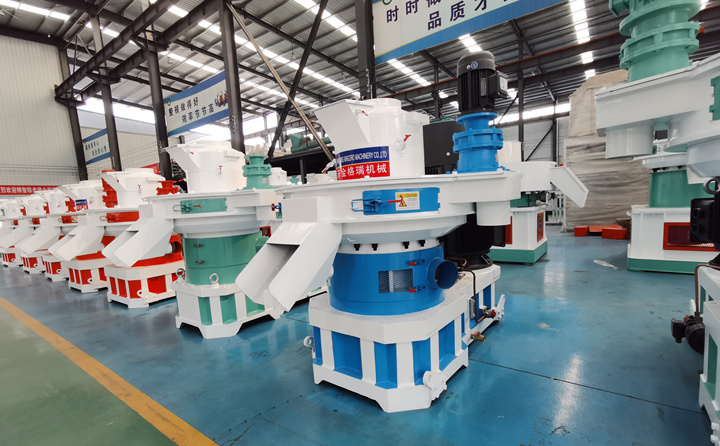This article mainly introduces several common knowledge that biomass fuel pellet practitioners know.
Through the introduction of this article, entrepreneurs who want to engage in the biomass particle industry and entrepreneurs who have already engaged in the biomass particle industry have a more intuitive understanding of biomass particles. Usually, we always encounter some questions about the basic common sense of biomass fuel pellet machine pellets. There are many people who consult, indicating that this industry is a sunrise industry. If no one cares, it seems that this industry has no potential. In order to help colleagues in the biomass fuel industry to learn and communicate more quickly, the collection of common knowledge about biomass particles is hereby organized as follows:
1. The biomass pellet output is calculated by ton/hour
Experienced biomass fuel pellet manufacturers know that the production capacity of biomass fuel pellet machines is calculated by the production capacity of tons per hour, not by day or month as the outside world thinks, why, because biomass The fuel pellet machine has various links such as maintenance, adding butter, and changing the mold, so we can only measure the production capacity by the hour. For example, 8-10 hours a day, 1 ton per hour, 25 days a month, so the overall production capacity is calculated.

2. The biomass fuel pellet machine has strict requirements on the moisture content of the raw materials
For raw materials of different materials, it is better to control the moisture content at about 18%. This moisture raw material is conducive to the molding of biomass fuel pellets. It is not good if it is too dry or too wet. If the raw material itself has less moisture, it is recommended to install a drying line.
3. The biomass fuel pellet machine also has requirements on the diameter of the raw material
The raw material size of the biomass fuel pellet machine needs to be controlled within 1 cm in diameter. If it is too large, it is easy to jam the feed inlet, which is not conducive to the molding of the machine. Therefore, don’t think about throwing any raw materials into the pellet machine. to smash.
4. Even if the appearance of the pellet machine changes, its principle structure is inseparable from these three types
The two types of pellet machines that are relatively mature in China are the flat die pellet machine and the ring die pellet machine. No matter what kind of appearance you have, the fundamental principle remains the same, and there are only these two types.
5. Not all pellet machines can produce pellets on a large scale
At present, the only machine that can be used for large-scale production of granules in China is the ring die granulator. The granulator of this technology has high production capacity and can be produced on a large scale.
6. Although biomass fuel particles are environmentally friendly, the production process is not well controlled and polluted
The biomass pellets we produce are environmentally friendly and renewable clean energy, but the production process of biomass pellets also requires environmental awareness, such as the power consumption of pellet machines, dust emissions during processing, etc., so biomass pellet plants need to do a good job of dusting Governance work and energy saving and consumption reduction work.
7. The types of biomass fuel pellets are very rich
The types of raw materials currently available for biomass fuel pellets are: pine, miscellaneous wood, sawdust, peanut husk, rice husk, sawdust, camphor pine, poplar, mahogany shavings, straw, pure wood, fir wood, pure sawdust, reed, pure pine wood, solid wood, hard miscellaneous wood, chaff, oak, cypress, pine, miscellaneous wood, bamboo Shavings willow wood powder Bamboo powder Caragana shavings fruit wood elm furfural residue larch template jujube birch sawdust shavings Korean pine biomass cypress log wood aldehyde pure pine sawdust Round wood miscellaneous wood solid wood shavings pine pine powder pine red material rice charcoal base Demolition wood poplar corn stalks red miscellaneous wood hard miscellaneous wood shavings wood bran peach wood sawdust miscellaneous wood sawdust radiata pine jujube branches corn cob wood scraps mahogany bran flax pine wood chips pine wood chips miscellaneous wood chips bamboo chips wood chips wood shavings bagasse palm empty fruit String Willow Gorgon Shell Eucalyptus Walnut Fir Wood Chips Pear Wood Wood Chips Rice Husk Zhangzi Pine Waste Wood Cotton Stalks Apple Wood Pure Wood Particles Coconut Shell Fragments Hardwood Beech Hawthorn Tree Miscellaneous Wood Reed Grass Caragana Shrub Template Sawdust Bamboo Chips Wood Powder Camphor Wood Firewood Pure Wood Cypress Pine Russian sycamore pine, pine, miscellaneous wood, saw foam, hardwood, sunflower shell, palm shell, bamboo sawdust, pine wood shavings, bamboo wood, burning oak powder, miscellaneous wood, mahogany, do you feel eye-opening after seeing so many kinds of raw materials? It is also made of pine, miscellaneous wood, peanut husk, rice husk and other materials.
8. Not all particle coking is a problem with particle fuel
Biomass fuel particles have different combustion effects in different boilers, and some may form coking. The reason for coking is not only the raw material, but also the design of the boiler and the operation of the boiler workers.
9. There are many diameters of biomass fuel particles
At present, the diameters of biomass fuel particles in the market are mainly 8 mm, 10 mm, 6 mm, etc., mainly 8 and 10 mm, and 6 mm is mainly used for fireplace fuel.
Post time: Apr-14-2022










